Media | Articles
The 1966 Matra-Bonnet Djet 5S is a mid-engine French phenom
I spotted the slim, sleek, tiny white coupe on a fairly empty road near my Florida home. It was a quiet afternoon, but a neuron suddenly tickled.
I pulled next to the driver, who introduced himself as Randy McCormick. The just-under 14-foot-long, 4-foot-tall coupe was one of only 355 Matra-Bonnet Djet 5S models made for the 1966 model year. The Djet, first released in 1962, is considered by many the world’s first production mid-engine sports car, Randy told me. The 5S you see here came from the factory with a 1.1-liter Renault 8 Gordini engine positioned behind driver and passenger.
In 1968, Randy borrowed the Djet from his brother so he could take out Joyce, who became his wife, on one of their first dates. They were headed to their high school’s Thanksgiving football game, an annual matchup with the cross-town rival. Despite the open windows messing up her hair for the big game, Joyce was impressed with the white sports car.

“He showed up in everything in the world to pick me up. One time it was a hearse,” Joyce said with a laugh. “ … I really loved [the Matra]. I just thought it was cool. As he was going down the street and gunning it, a neighbor yelled at him to ‘Slow it down!”
Randy gave the neighbor a one-finger salute in response, something he and Joyce agree he would never do now.
Marketplace
Buy and sell classics with confidence
Time has a way of changing one’s focus. René Bonnet joined Charles Deutsch to form the Deutsch et Bonnet (D-B) sports car brand in the mid-1940s. They started building front-wheel-drive machines with Citroën, and later Panhard, mechanicals. Some of their lightweight cars were distinguished by finned front wheels to cool the brakes. The partnership ended in 1961, and Bonnet founded his own company with the intention of producing a mid-engined sports car with Renault power.

Jacques Hubert designed this slim Djet shape for Bonnet in 1961, calling on a basic, 71-hp four-cylinder 1.1-liter engine from the rear-engine, rear-drive Renault 8 sedan. Slight updates followed, with subsequent more-powerful versions dubbed the Djet II, III, and IV appearing through 1964. In the two-year period from 1962–64, Bonnet sold only about 200 Djets. Faced with financial issues, his company was acquired by a French industrial firm by the name of Matra (Mécanique Aviation Traction) took over. You might remember Matra as a race car maker that won the 1973, ’74 and ’75 24 Hours of Le Mans race in slick prototypes.
For 1965, a further revised Djet V arrived, 16 inches longer and about 5 inches wider and with the same mid-mounted 1.1-liter four-pot. A variant known as the 5S, (also called VS) powered by the so-called “Gordini” engine (also included in the Djet II), followed, along with the 1255-cc Djet 6. Racer and engine tuner Amédée Gordini coaxed 89 hp out of the little mill, thanks to a ribbed cylinder head and twin Solex carburetors. Period data indicates that the just-under 1500-pound Djet could do about 120 mph. Racing versions fared well in period at venues like Sebring and the Nürburgring.
Just 1495 Djets were made when production ended in 1968, though Bonnet is said to have built a small, unknown number on his own. Matra went on to build some similarly-sleek coupes like the 530, with pop-up headlights, the Lotus Eclat-like Bagheera, the slick mid-engine compact Murena coupe, and the SUV-like Rancho, plus some F1 and other open-wheel race cars.
A slim bumper sits beneath the 5S’ sharp nose, tucked under faired-in headlights and above a lower intake with running lights and lower brake scoops. Matra’s delta badge, under six-pointed alloy hood strakes, marks the small frunk, where gas tank, spare tire and tool kit live. Gentle fender flares tightly frame skinny 15-inch radial tires on white steel wheels, chrome covers wearing faux knock-off hubs with a unique checkered flag center caps. The Djet 5S has rearward-facing fender vents aft of tiny doors, roll-up frameless windows with flip-out rear glass for more interior airflow.
The fiberglass body tucks tightly into the steel backbone chassis. The shape is extremely sleek and boasts reported coefficient of drag of 0.27—solidly aerodynamic for the time. The low curved roof becomes a rounded, almost all-glass hatchback that flows into a short deck, The flat tail has large round taillights, a slim wedge of bumper over a single exhaust pipe. That hatchback is framed in aluminum strips, each with nine Matra triangles for a neat look. Duck down and you’ll notice the fully independent rear suspension with upper and lower A-arms, with coil springs and disc brakes also very visible. The engine is suspended between black steel box tubing under soundproofing between it and the cover..
Randy joked that he “might have to use a shoehorn” to get me into the small red, white and black-trimmed cockpit. Ingress is like into many race cars: butt in first, then duck and carefully fold each leg through the tiny door openings. The lightweight doors, with frameless windows, close with a reassuring “click.” I was soon shoulder-to-shoulder with Randy, the window crank handle indenting our outboard knees and the windowsill at just the right height for elbows-out motoring. We sat low in the cozy cockpit.
The skinny wood-rimmed steering wheel rests somewhat in your lap, with perforated aluminum spokes and a Starfleet-like center emblem. That’s not the horn; like most French cars, it’s the skinny left stalk one taps to toot. The dashboard is a T-shaped wooden shield, housing a classic black Jaeger 220 mph speedometer and 8000-rpm tach straight ahead. A press. huile (oil pressure) needle flickers when driving. The spread of idiot lights continues for headlights, water temperature, the turn signal, and fog lights, all of which sit above oil, gas, amperage, and water-temp gauges. Below a blank for an aftermarket radio is a classic chrome ashtray, some unlabeled push-pull and toggle switches, and a tiny ignition key.

A slim chrome four-speed shift lever with tiny black ball and tall leather boot occupy the low and narrow center console. A thin chrome parking brake cuts into a sort-of center armrest right up against the carpeted rear bulkhead. At each end of the dashboard, small black eyeball air vents exuded a bit of breeze at speed.
As alluded to earlier, Randy’s Matra Djet originally belonged to his brother, Charles. Charles and a friend were on a scooter tour of France in August of 1968 when they rolled into a town near Vienne, in the country’s south. They spotted what looked a lot like an E-Type Jaguar, only smaller.
“It was approximately $3000, so I decided to buy it,” Charles said. “… We drove it around the local area and one trip to Paris. We did it in only a few hours and the guys we knew were very surprised that we could get to Paris and back in such a short time.”
In Charles’ care, the Djet made trips to Spain, Monaco, and Italy, then headed to Germany. Too small for his travel needs at the time, he planned to ship it back to the U.S. But not before fully sampling its spirit by allegedly maxing out the 220-kph speedometer,” he said. “I have no idea how fast it will go or what the top rpms are, as it doesn’t have a redline on the tach, and I never heard the valves float.”

He and the Djet next came to Jacksonville, Florida, and went on some trips in the Southeast. Brother Randy would borrow it sometimes, including that date to the high school football game. Charles left for overseas again in 1973, and the Djet got parked in a friend’s garage. It sat until 1990, when Randy was asked if he wanted to take ownership. He did, towing to his home garage where it easily fit, though he and Joyce were busy raising their family and had no time to work on it. Then, in 2000, he began working “off and on” to revive it, Randy said.
Getting back in the driver’s seat after almost 30 years was “really neat.”
“Having it for so long and working on it for so long in between times when it sat for a while, nobody else in Jacksonville has a car like that,” he said. “You see people looking at it and wondering ‘What the heck is that?’ It’s just awesome.”
With an indicated 41,000 kilometers (about 25,000 miles) under its skin now, the Djet’s body and interior felt tight and were fairly rattle-free. The driver’s seat showed some wear, as did the gray cloth headliner, but the body was mostly absent of any crazing and showing only a small scratch.


Alas, Randy says his original engine has some issues. For the time being he sourced a 56-hp 1.4-liter four from a 1985 Renault Alliance, with a Weber carburetor. It fit well and worked nicely.
“The only thing different between bolting those up is the flywheel,” he said. “The flywheel on the Alliance would not fit there, so I had to swap them.”
The original 1.1-liter Gordini engine is being worked on, with a planned return in the next year or so. It’s an involved affair, as the only way to work on the engine of a Djet is to remove its body, which he did at the start of its renovation. He repainted the frame at the same time in the garage.
“Everything is right there where you can reach it,” he said.
He even found a clever means of rolling the lightweight body in his shed for safe keeping.
“I built a little wooden cart and a frame on top with some hard rubber wheels,” Randy added. “I jacked it off the frame and slid it over on to the cart by myself.”
The temporary engine has some punch, plus a delightful raspy snarl from its tiny single exhaust. The Djet pulled impressively up to speed, and the suspension was firm, yet it didn’t upset us over bumps. Body motions are fluid and the Djet’s chassis felt glued to the tarmac in curves, despite skinny rubber.

“It’s fun to drive. One of the best things is it corners so well,” Randy said.
Shifting with four-speed manual yields an occasional crunch going into second due to the linkage aft to the transmission. “Down below there’s a rod about that (a yard) long that goes back,” Randy said. “It’s got knuckles on the front and back and it’s just really sloppy. You really have to get used to it.” He nonetheless finds the action to be precise, and the pedal placement is close enough for double-clutching.
I was able to sneak into the low-back driver’s red leather seat just to check out the environs. The bucket chair was so grippy that my wallet was imprinted into my backside. The driver footwell is narrow, just deep enough to almost straighten my long legs onto a long, slim gas pedal and tiny square brake and clutch. There’s plenty of room for the left-foot dead pedal, and decent headroom despite the roof curving down around our heads. Slim pillars make it easy to see out, thanks in part to tiny bullet mirrors. Right behind us is the cover for the engine—what looks like a black carpeted suitcase with twin leather straps—and some decent storage space under the almost all-glass hatchback.
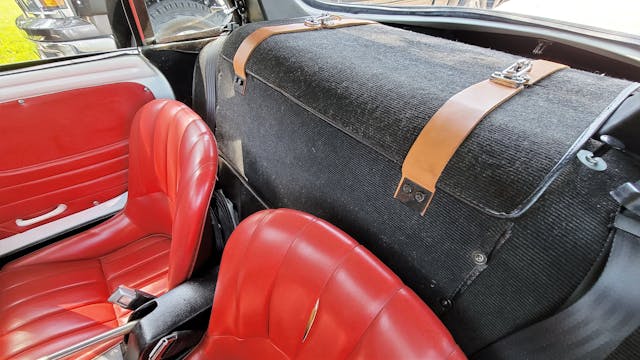
Randy promises I can drive it when the original engine is revived, and once he replaces the door, window, and hatchback weatherstripping that he’s been hunting for over the past seven years. Some general spiffing up wouldn’t hurt, either. He wants to but the Matra’s best foot forward.
He plans to keep the Djet “because it’s unique; because it’s been in the family for years’ because we had dated in it,” he said. “It’s just kind of special like that.”
Check out the Hagerty Media homepage so you don’t miss a single story, or better yet, bookmark it.







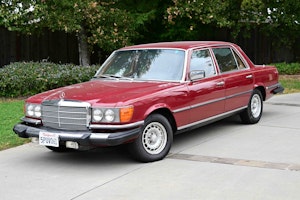



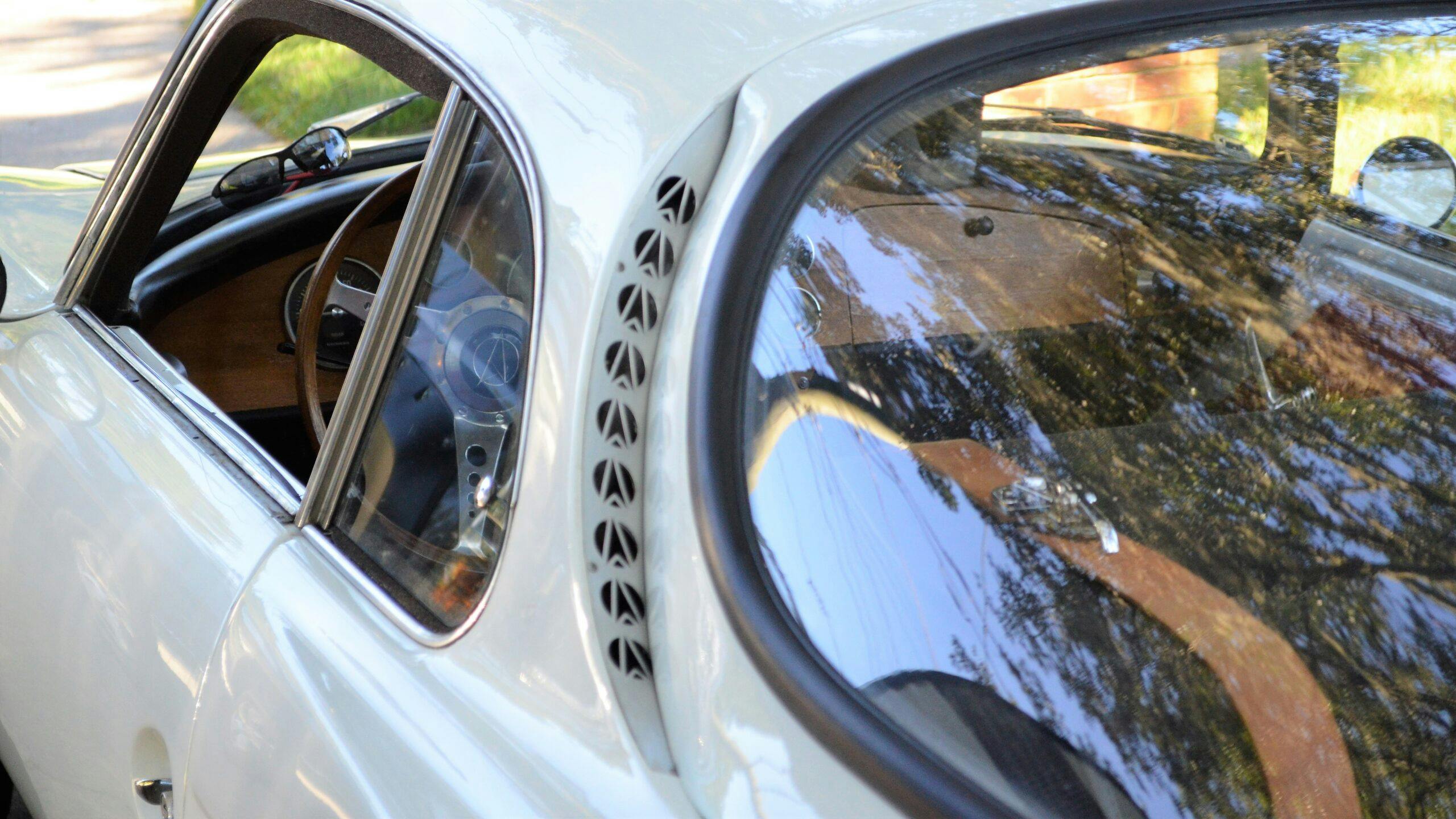

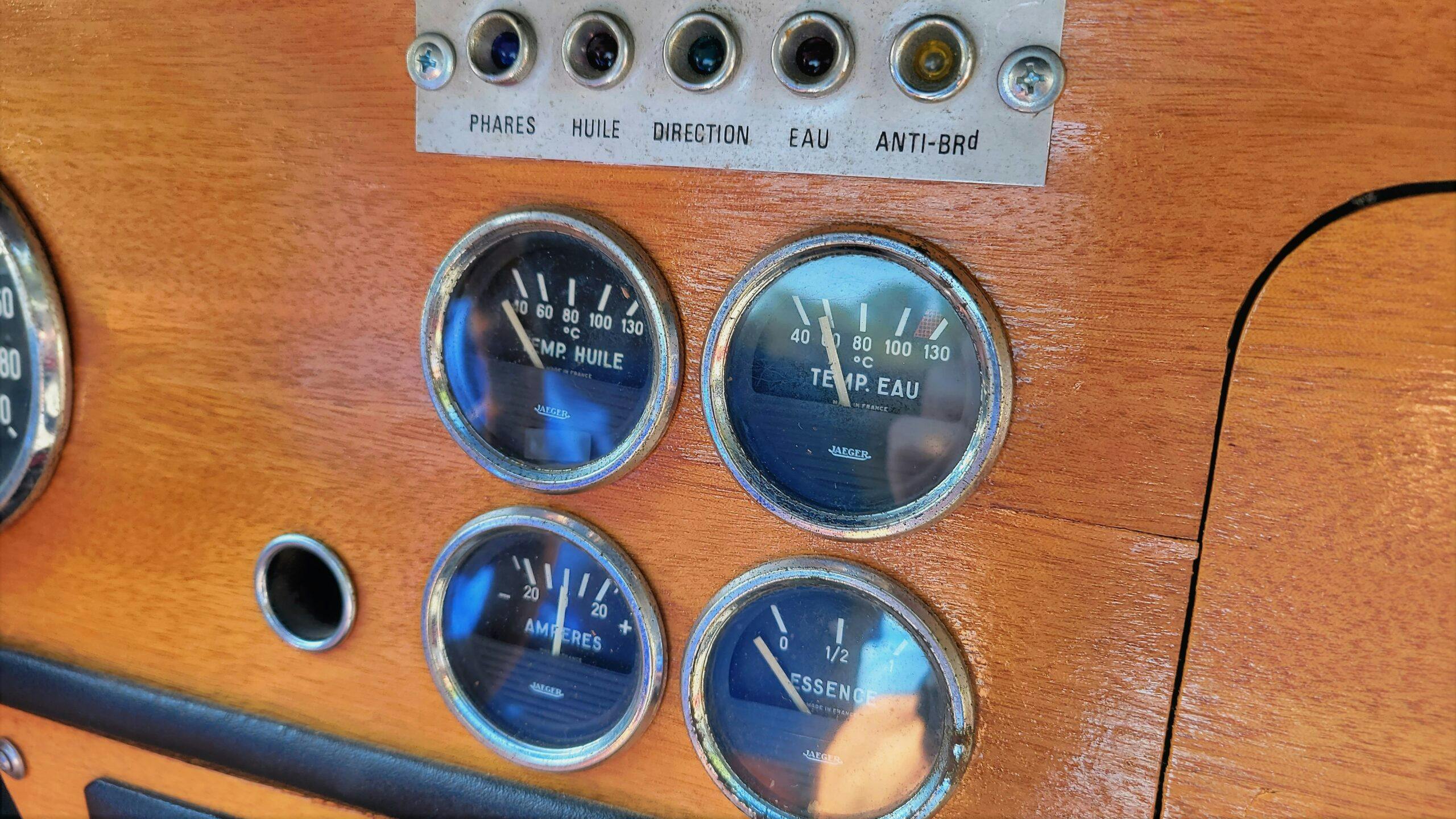














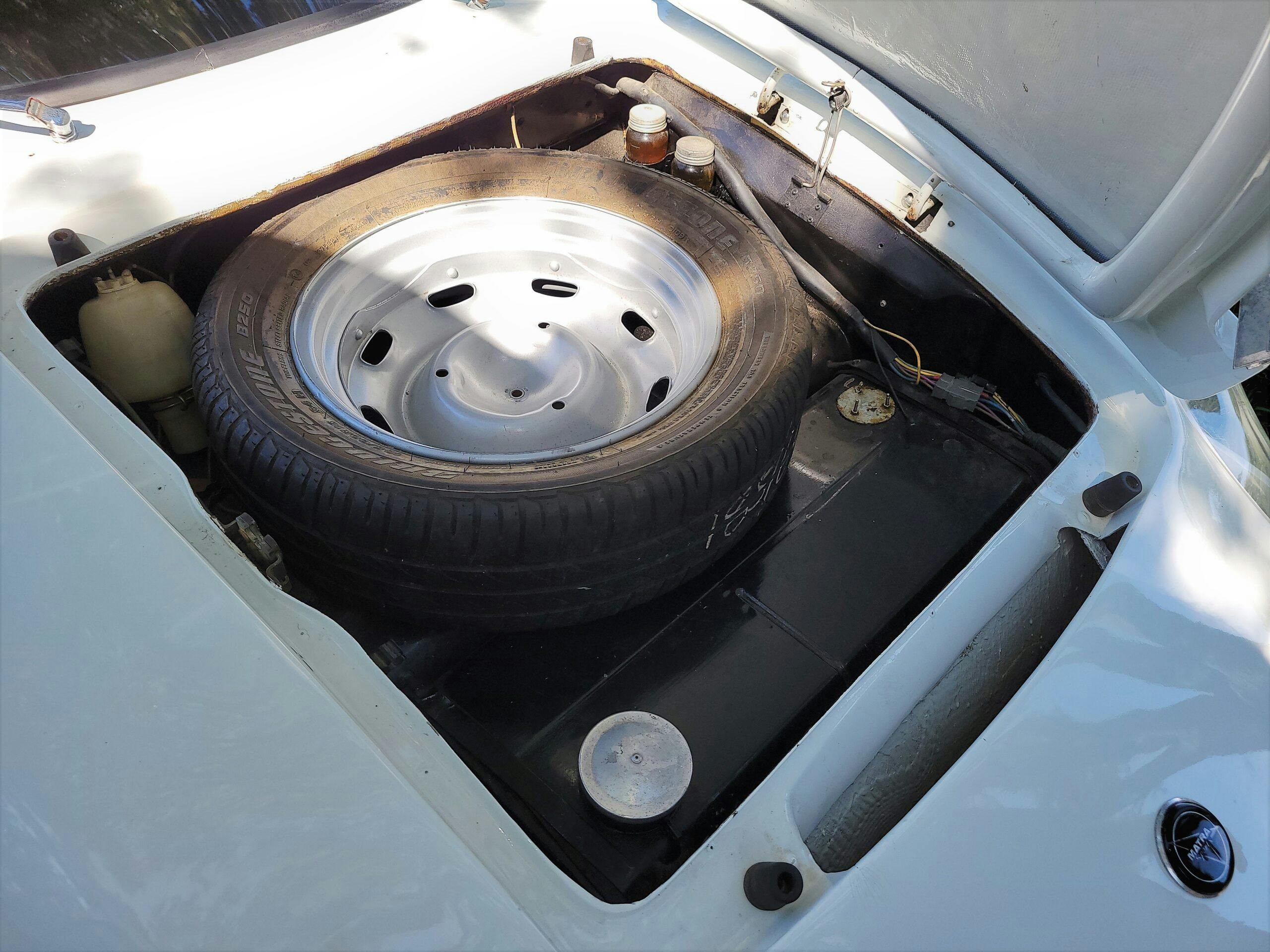

































Cool car!
Really not necessary to pull the body to work on the engine . . .
Unbolt a couple of frame crossmembers under the engine and it will drop right out. Jack up the car, roll the engine out.
Nice example!
Yes the motor and gearbox can be removed. There were other issues that required the body to come off.
Hello, I am the editor of the French magazine Coach Journal of the Djet club. I find that your article offers a passionate and curious look at Randy who was a member of our club. I want to partially publish it in our review for our 180 members from France, Europe, Australia, Japan and the USA. I ask your permission for the text and photos. Sincerely, Charly Christmann